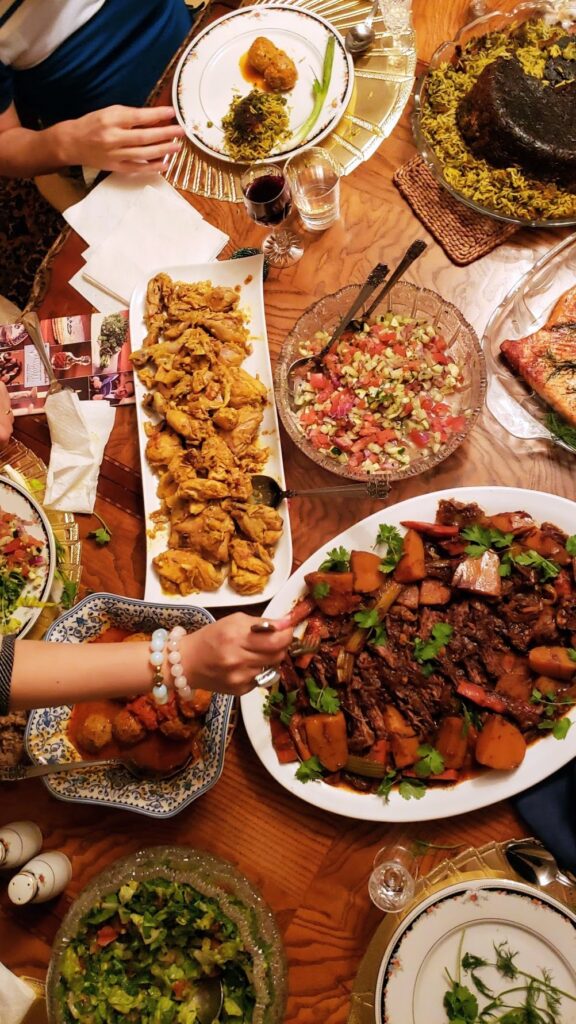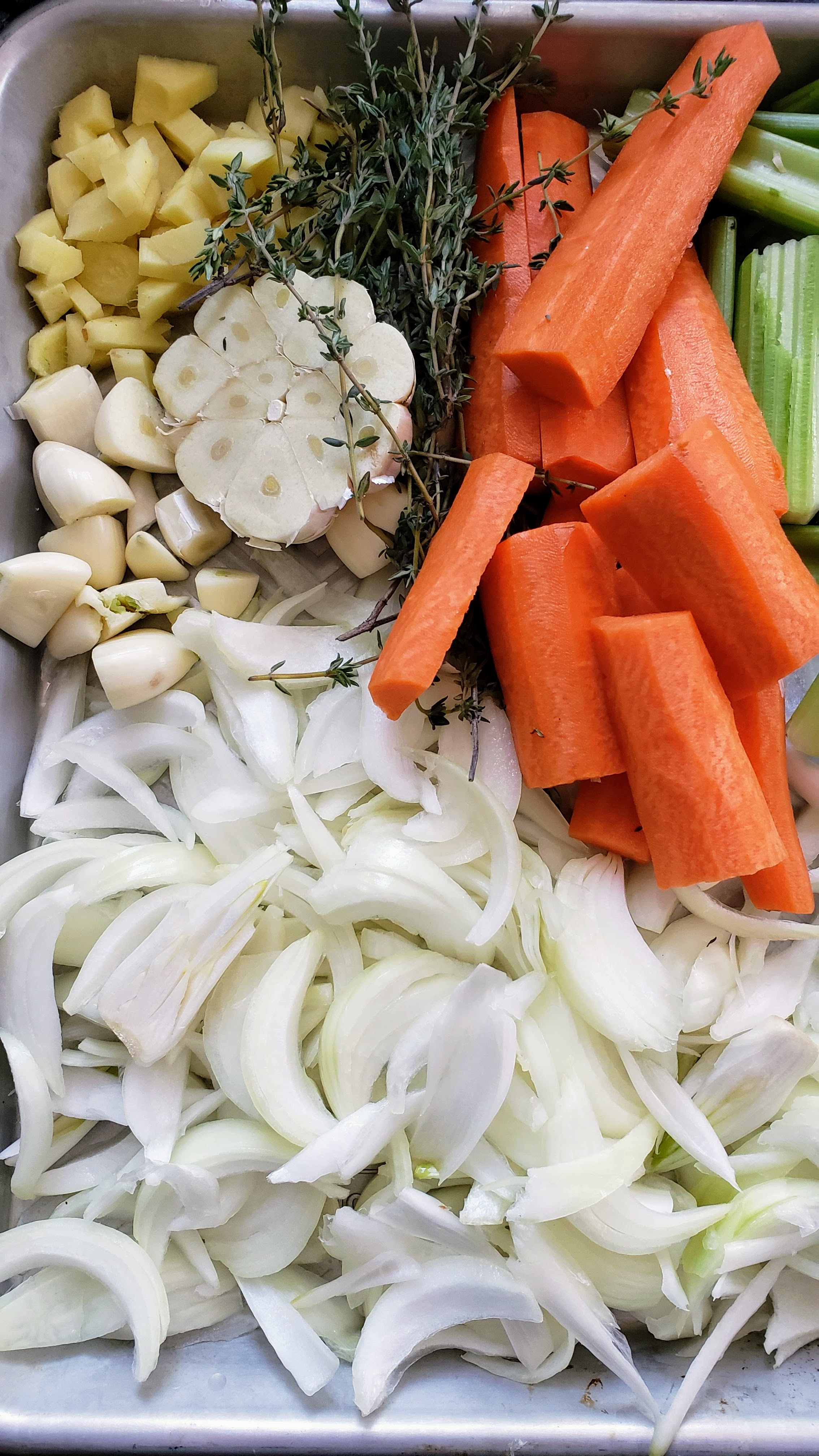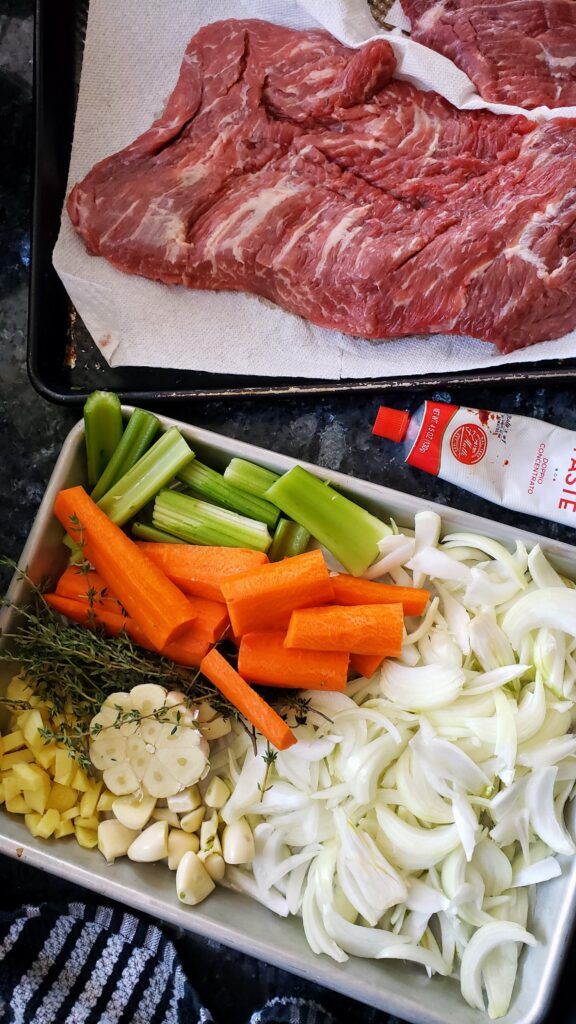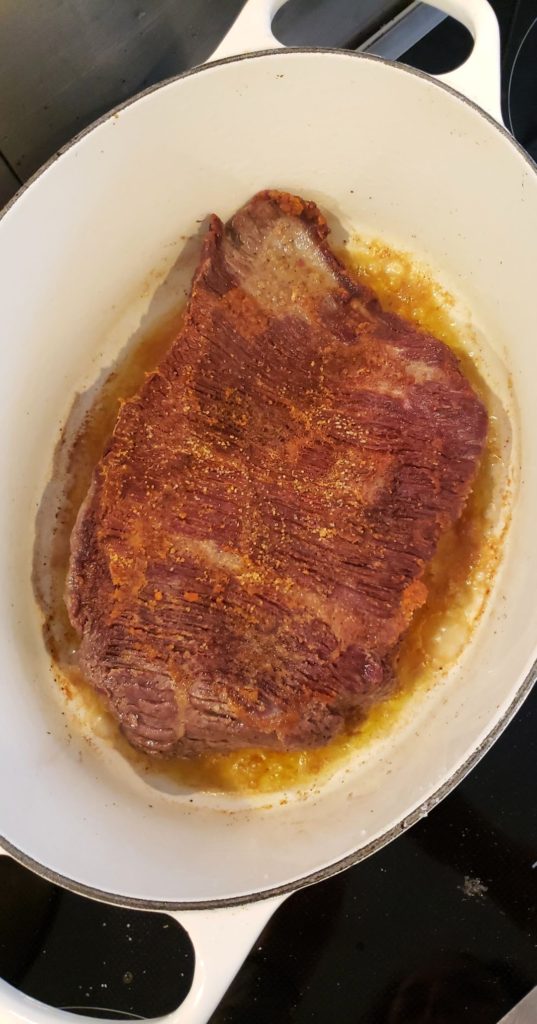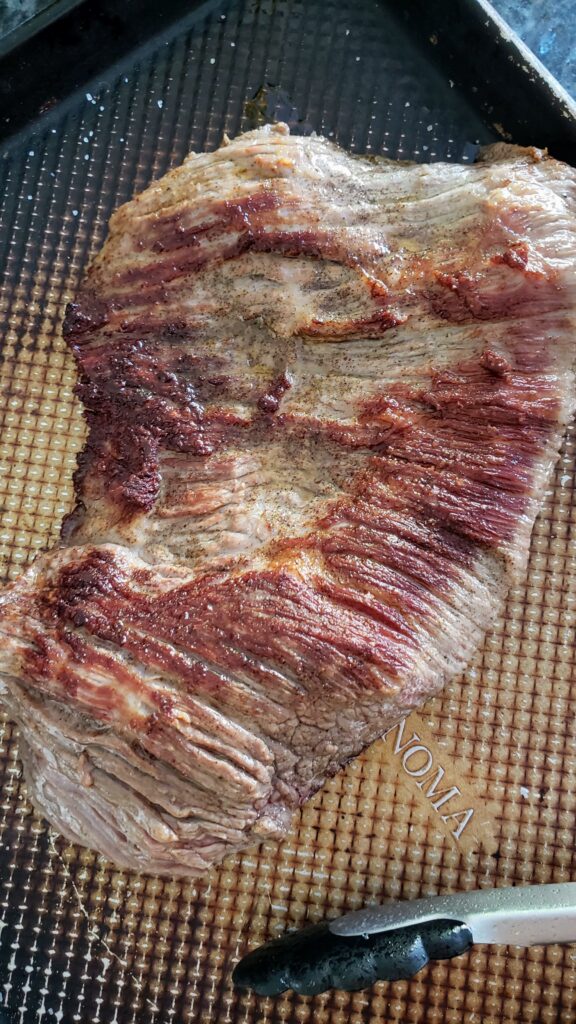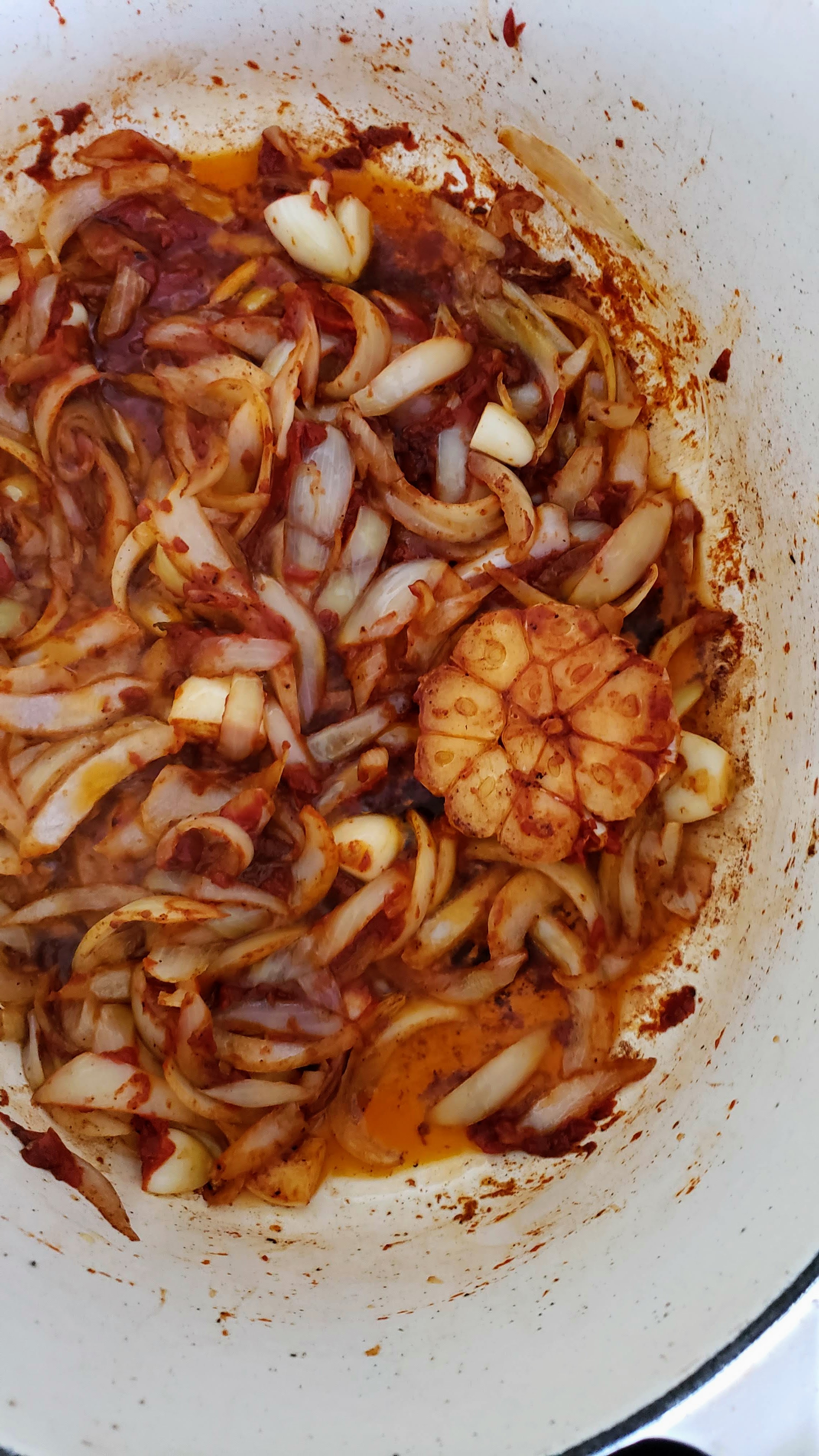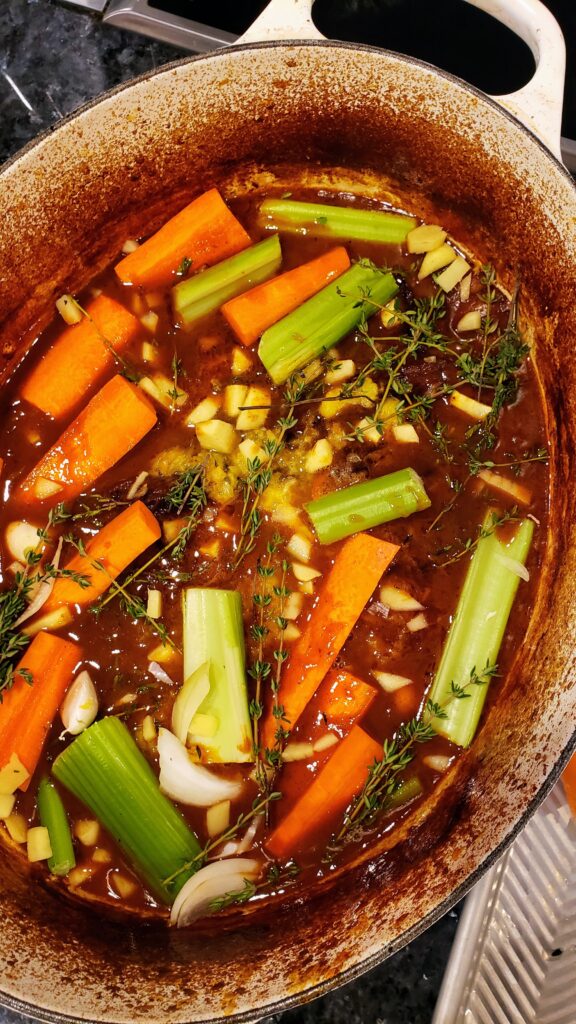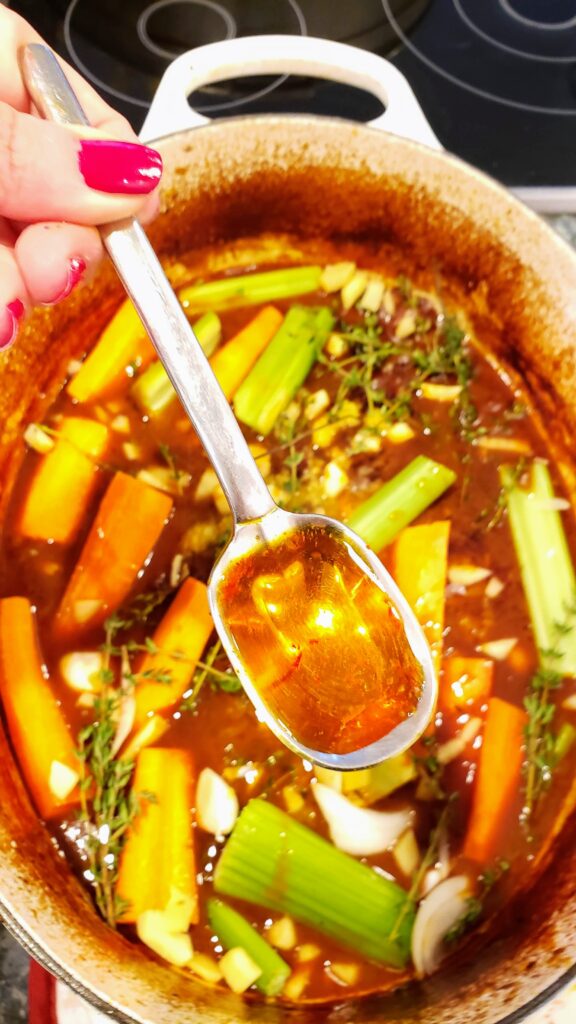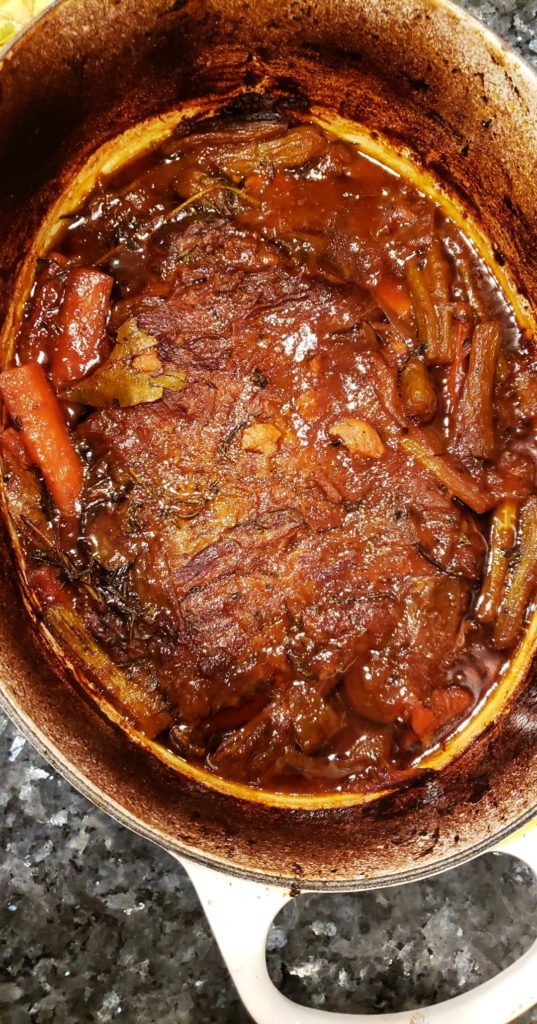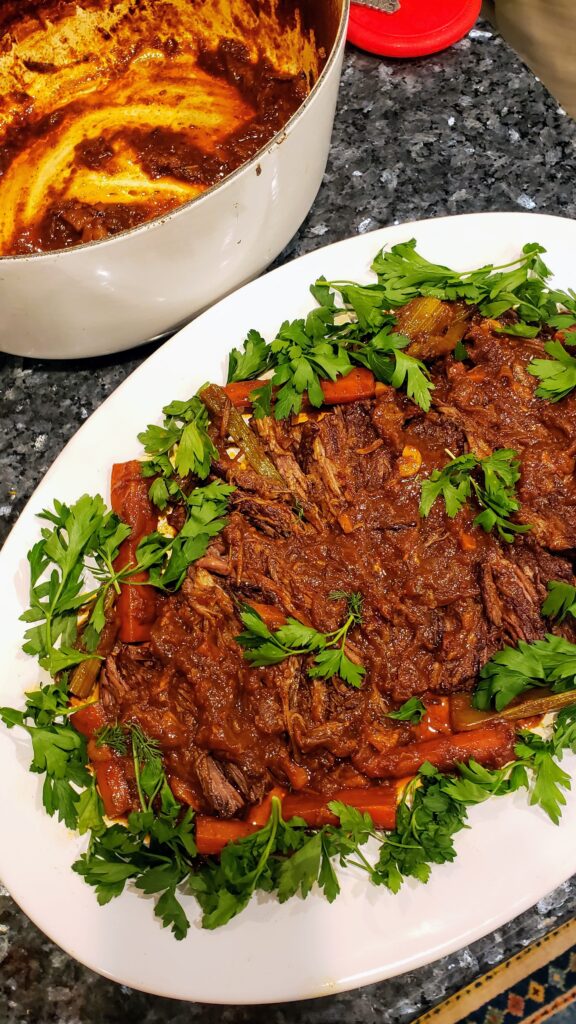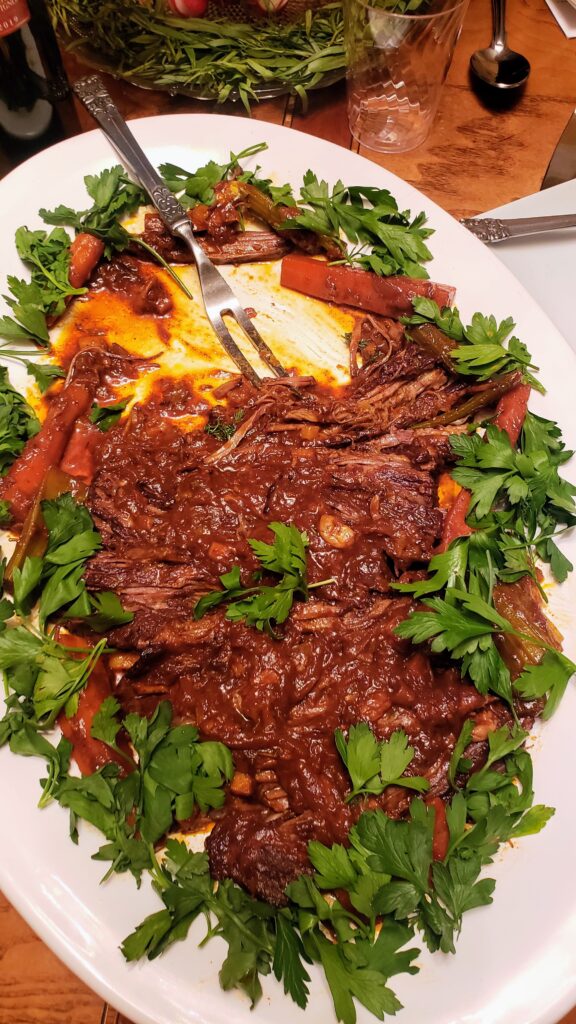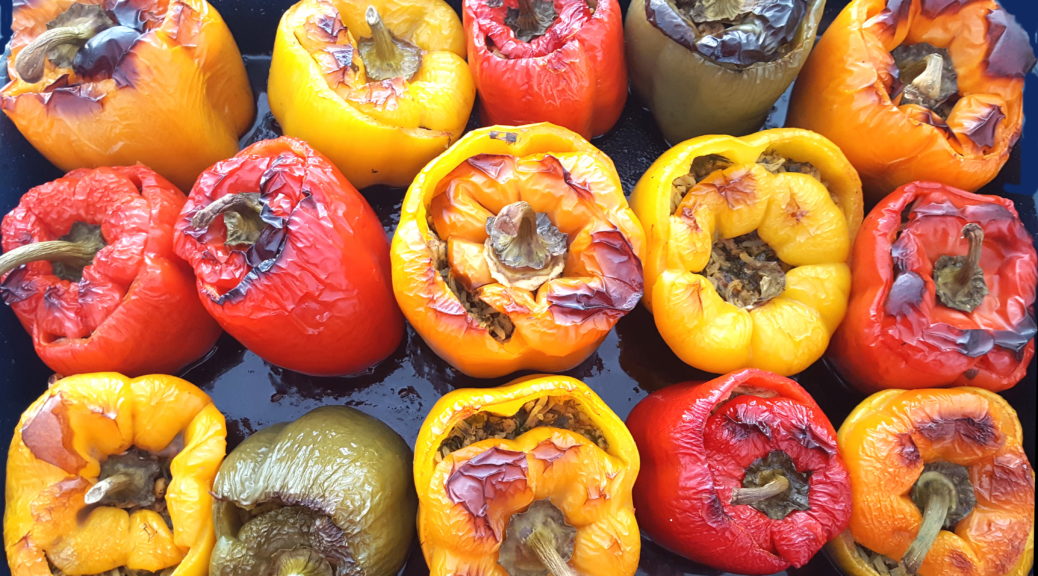Braised Brisket
The holidays are around the corner and although this year may be different than the rest- those of us who are fortunate enough- can still take solace in cooking a delicious meal. I’m grateful to be one with that privilege to indulge. According to the Oxford dictionary, “indulge” means to “allow oneself to enjoy the pleasure of.” I find pleasure in the simple things. Especially in a recipe which allows flavors to develop with the assistance of time.
Classic brisket is one of those simple pleasures. You sear the meat. Remove it. Add veggies and aromatics. Add meat back to the pot along with your braising liquid, then let time and heat do the work. The end result is tender, deeply flavored beef which takes its character from whatever you add to the pot. Magic!
This recipe is wonderful to cook for a small gathering, it serves about around 6, with a bit of leftovers for sandwiches the next day to boot. You cans add another piece of brisket to feed a larger group. Just add enough liquid to submerge all the meat while cooking.
~Tip – Try to find second cut brisket — It has slightly more fat marbling than the lean first cut variety and results in more flavor and tenderness.
Ingredients:
1 (5-7 pound) beef brisket, preferably second cut
3 tablespoons extra-virgin olive oil, divided
10-12 garlic cloves, smashed or an entire head of garlic with the top cut off
2 medium onions, sliced
3 medium carrots, cut into 3-inch pieces
3 celery stalks, cut into 3-inch pieces
6-8 sprigs fresh thyme
2-3 sprigs fresh rosemary
2 whole bay leaves
2 tablespoons tomato paste
5-6 cups beef stock (or chicken stock or water)
Directions:
- Preheat oven to 350 degrees F and adjust a rack to the lower third of the oven.
- Let meat stand at room temperature for 30 minutes before cooking. Pat dry with paper towels. Season generously on both sides with salt and pepper.
- Heat 2 tablespoons of the oil over medium-high heat in a large ovenproof enameled cast-iron pot or other heavy pot with a lid. Add brisket and sear, without moving, until golden walnut colored crusty brown areas appear, about 5 minutes per side. Transfer to a plate and set aside.
- Add the remaining 1 tablespoon of oil, garlic, onions, carrots, celery, thyme, rosemary and bay leaves to the pot. Sauté for approximately 5 minutes until unions have softened but not caramelized.
- Stir in tomato paste and cook for 2 more minutes.
- Add stock and bring to a gentle simmer, scraping up any brown bits stuck to the bottom of the pan with a wooden spoon.
- Place the brisket back in the pot, cover and place in the oven.
- After 3 hours, remove the lid from the pot and continue cooking uncovered so some of the liquid can evaporate and sauce can thicken. Continue braising for about 1 hour more, or until the brisket is fork tender. If the sauce starts to get too thick before the meat is tender, cover the pot again.
- Remove from oven and transfer meat to a cutting board; cover loosely with aluminum foil and let rest 15- 20 minutes before slicing against the grain into thick slices. Arrange sliced meat on a serving platter.
- Discard rosemary, thyme and bay leaves from the sauce. Using a slotted spoon, remove vegetables and arrange around the brisket. Spoon desired amount of pan juices over the brisket and serve.
